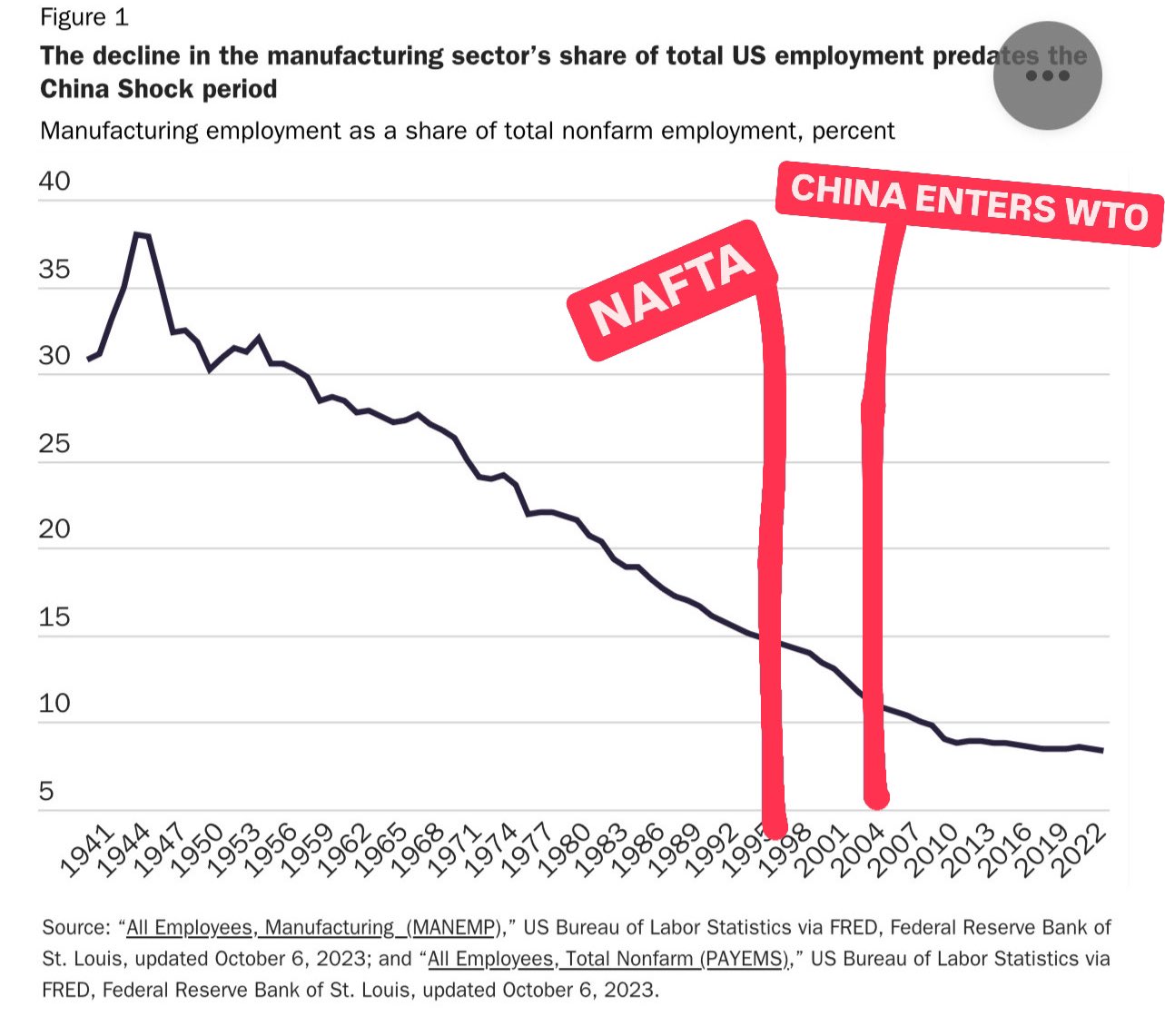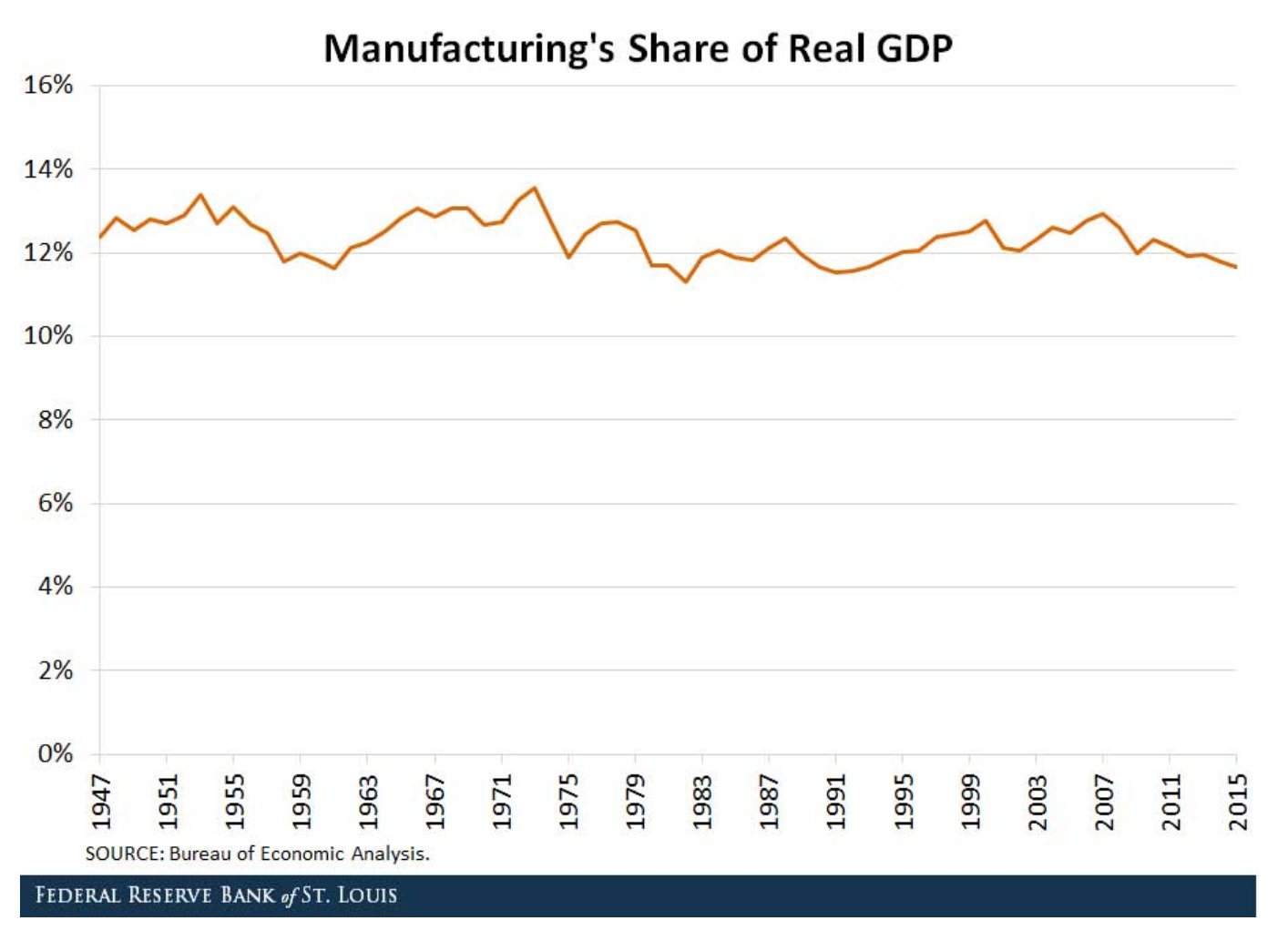At the start of this 2022 video, I openly stated that trade destroys jobs.
But since I didn’t want anyone to jump to the wrong conclusion, I quickly explained that all trade destroys jobs, whether trade between North Carolina and Missouri or trade between the United States and Europe.
And I then shifted to the real message of the video, which is that jobs are routinely destroyed by “creative destruction.”
That’s the bad news.
The good news is that creative destruction is the dynamic force that leads to the creation of new jobs, while also producing higher living standards.
Having established these facts, let’s now look at two charts.
The first one shows that neither NAFTA nor China had any effect on the overall long-run trend in manufacturing employment.

This does not mean that some manufacturing jobs were not destroyed by those trade agreements (or that others were not created).
But it does suggest that those trade deals did not have a measurable impact on overall manufacturing employment.
Let’s now consider whether we should worry about the decline in manufacturing jobs. In other words, even if the loss of those jobs is not because of trade, is it something that requires government intervention?
According to the second chart, the answer is no. As you can see, the economic footprint of manufacturing has stayed remarkably constant since the end of World War II.

These charts seem contradictory until you realize that the manufacturing sector has enjoyed big increases in productivity. As noted back in 2017, fewer workers are needed to build cars or produce steel.
That’s a good thing. It’s why we are, on average, much richer today.
———
Image credit: cwizner | Pixabay License.

